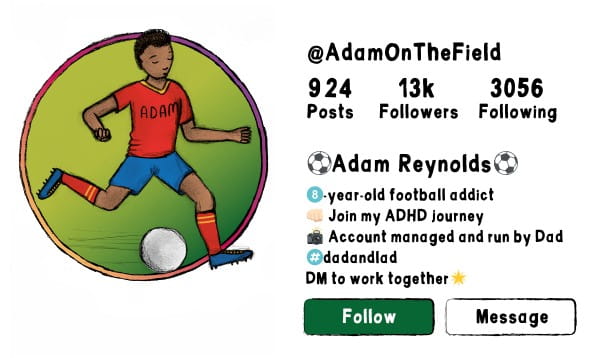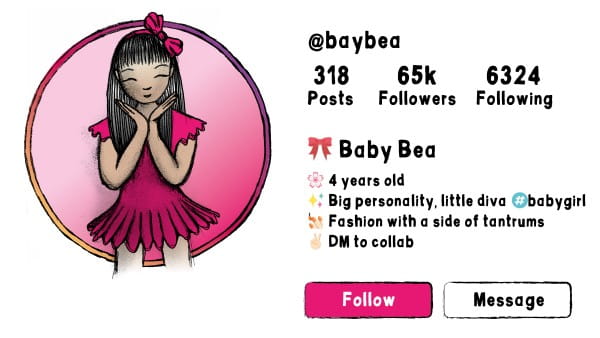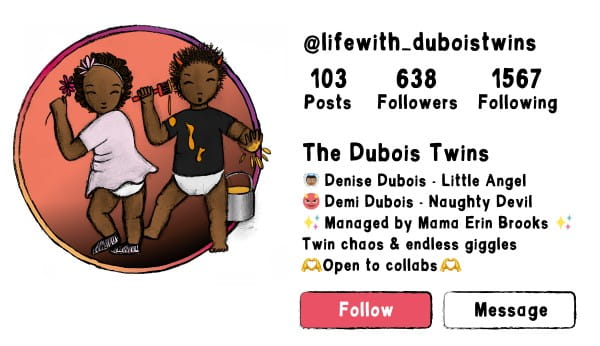Financial

Potential financial risks
These questions could be posed as part of your risk assessment practices:
- Will the performance of the child result in any economic gain, including goods or services?
- Is the parent contracting with a business or agency who has more industry knowledge and/or expertise than them?
- When posting content, could information be given away that might make it easier to digitally impersonate the child?
Economic gain

Adam
Adam's mother has been approached by a leading sports brand, who have asked her to post a reel of him playing football in a new pair of boots, which they provide. There is no financial payment for this work, just the boots which retail at £100 in shops, and which Adam can keep after the reel has been made.

Bea
Bea's parents have contracted with an agency for an upcoming kids clothing launch, with an overall contract value of €12,000.
Risk management
Goods and services will generally be enjoyed by the child themselves, as well as the wider family, but perhaps also consider this under the dignity/reputation section - is this something that the child genuinely endorses, supports, and wishes to be affiliated with in a permanent way?
Where money has been given in return for the performance, in some jurisdictions this is now being brought in line with the law for child models and actors, who have entitlement to their earnings.
- Could this money be put aside in whole or in part into a separate account or trust fund, in order to support the child's future financial security?
- Could brands include this within contracts and/or parents set up separate trust funds for the child's future needs?
Where goods and services are being provided, it is important to consider that brands would traditionally have had to pay for a child model or actor to come to a photoshoot and/or be part of a costed advertising campaign. As a parent, while it is always flattering to receive brand attention for your child, this content can provide large financial capital for brands and so it is appropriate to expect fair payment in return. Brands should also consider fair practices here and provide transparent information about standard payment practices in the influencer marketing industry, in comparison to traditional media advertising formats.
Industry knowledge

Adam
Adam's mother has been approached by a leading sports brand, who have asked her to post a reel of him playing football in a new pair of boots, which they provide. There is no financial payment for this work, just the boots which retail at £100 in shops, and which Adam can keep after the reel has been made.

Cole
Cole's content has come to the attention of a global children's entertainment company and they would like him to join their 'online talent collective'.
Cole's father has received initial contractual information, with very lengthy forms and detailed terms and conditions relating to the content itself, but also expectations relating to Cole's 'look' and 'behaviours', both online and offline.
Risk management
There will be a power and knowledge disparity here, where parents are dealing with commercial entities (with their own financial and legal departments), so parents should not feel under pressure to sign something without further research and/or their own independent advice.
Some aspects of the brand or agency contracts and/or directions can encompass aspects of family life that may seem intrusive, especially in relation to behaviour and appearance. There is more support on this under the dignity/integrity section, but it is important to remember that these directions are coming from a commercial entity with a 'brand' reputation to uphold, and they may not align with how parents view their family.
Brands should consider the expectations of these contracts within the realms of realistic family life practices, as these are not actors playing roles, but real people coping with the real 'messiness' of everyday life.
Digital impersonation

Bea
Bea's birthday reel received 16,780 likes. In the reel Bea is seen playing outside her house and her Dad approaches with a box that is moving.
Bea opens the box to reveal a small golden puppy: Bea squeals and says "Oh Daddy, a puppy… I didn't think we could have any pets. Thank you Daddy, you're the best. Can we call him Buttons?".

Cole
Cole's parents add to his 'Highlights' school story each year, posing him at the front door in his school uniform, with the school name and logo clearly visible, and adding comments about his height or hair changes etc.

Demi and Denise
Demi and Denise's parents have split and, although their account lists them as the 'Dubois twins', it mentions that the account is managed by 'Mumma Erin Brooks'.
Risk management
Information that is shared about children can potentially build a digital profile of the child for identity fraudsters, increasing the risks of 'digital kidnapping'. Fraudsters could use the content to create false identity documents, open bank accounts and/or lines of credit in the name of the child, posing risks to their credit profile and future financial security. Important information that could be used as security questions and/or identity verification is being provided through the examples above. This content includes;
- birth date,
- child's first pet,
- first school,
- mother's maiden name etc.
These risks are magnified by the use of AI within platforms, as well as specific AI apps where images can be uploaded. Here the AI will access the face and identity of the child, any background information from the image, as well as any metadata from the device. AI will enable the storing of this data, as well as training future AI models, and enable the sharing of the data.
Consider what information is being shared, to whom and for what purpose, and what identifiable data about the child is being disclosed. Is it possible to remove/limit these details in order to decrease the risk of identity theft/fraud?
Take a beat - when planning content and message delivery, consider the data privacy issues set out above and how these could be minimised and/or edited out of the uploaded content before posting.
© Copyright University of Essex 2025

Health and safety





